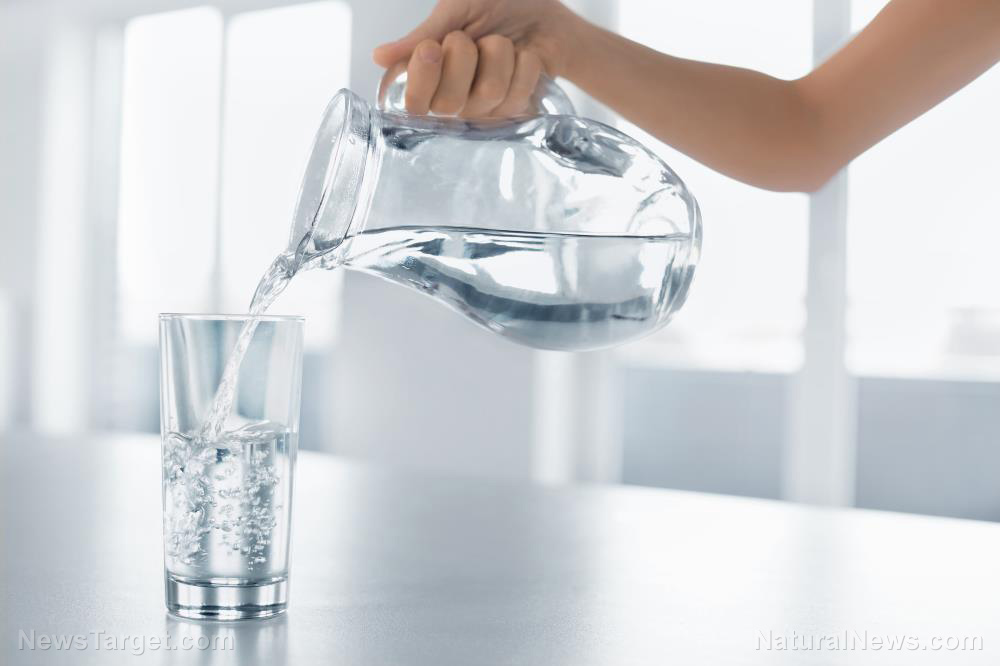Use distillation to turn seawater into clean drinking water when SHTF
11/15/2019 / By Darnel Fernandez

One of the cruelest ironies of this planet is that there is an overabundance of water, but not much of it is actually drinkable. Water is absolutely necessary for survival and finding a reliable water source should be anyone’s top priority when SHTF. In any disaster, drinking water may become a rare find, especially if you fail to stockpile beforehand. Most stores would be picked clean in only a few weeks and the water supply won’t last forever. Thankfully, with proper knowledge, you can get perfectly potable water from the most abundant type of water in the world: seawater. (h/t to Survivopedia.com)
Turning saltwater into salvation
Seawater (saltwater) shouldn’t be used for drinking in any situation, even for survival. The salt content in seawater is 35 parts per thousand. Instead of quenching your thirst, consuming high concentrations of salt can actually cause dehydration. The body must eliminate any excess salt for cells to survive which, in turn, causes the body to secrete urine. Unfortunately, the kidneys can only produce urine that is less salty than seawater, causing a significant net loss in water. If you don’t drink any freshwater to reverse these effects, it will lead to organ failure and death.
Now, with the current technology, it is possible to incorporate saltwater into the water supplies. An Israel-based company called IDE Technologies has been providing three million cubic meters of “high-quality water” through their saltwater desalination projects. For survival purposes, large-scale desalination is still unfeasible, but there are other ways to extract drinkable water from seawater. (Related: Survival tips when collecting potable drinking water in the wilderness.)
Below you can find a few ways you can eliminate salt to quench your thirst:
Basic distillation
This method involves heating water to turn it into steam (water vapor), then condensing the gas back into a liquid. At sea level, water boils and turns to steam at 212 F. This leaves behind any chemicals, minerals, and salt because they do not have the ability to turn into vapor at that temperature. This vapor is then passed through a condenser to coll it and turn it into drinkable water.
For this process to work, the still must be sealed completely. You can use a pressure cooker with a single outlet to attach the condenser. Copper tubing can act as the condenser due to its heat-conducting properties. All you need to do now is make the condenser run in a downhill pattern toward a catch container to allow the vapor to turn back into the liquid.
This system can produce plenty of water every day, provided you have enough fuel to supply the heat source.
Solar distillation
The constant need to replenish the fuel in the standard distillation process can become a problem in the long run. While you may not run into this problem if you live in a heavily wooded area, people in urban areas can find themselves in a jam once they run out of fuel. Thankfully, the sun can provide enough heat for distillation.
The concept behind this is similar to standard distillation: the sun provides heat to cause the water to evaporate, leaving behind any harmful particles. Then, the water reforms into a liquid in the right conditions. However, the solar still does not produce as much vapor as the fire-powered one due to a lower internal temperature.
Salt harvesting
Desalinating water can also bring about other advantages. If SHTF, natural salt may become highly prized and can be used for trading. Most people would lose access to salt, which is required for survival. This makes the desalination of saltwater a terrific way to acquire barter goods.
This essential survival skill can not only save your life, but the lives of your loved ones as well. Learn more ways of harvesting drinkable water at WaterPurifiers.news.
Sources include:
Tagged Under: bug out, clean water, desalination, disaster, distillation, freshwater, how-to, off grid, potable water, preparedness, prepper, prepping, salt, saltwater, seawater, SHTF, survival, Survival Tips, survivalist, sustainable living
RECENT NEWS & ARTICLES
COPYRIGHT © 2017 GEAR.NEWS
All content posted on this site is protected under Free Speech. Gear.news is not responsible for content written by contributing authors. The information on this site is provided for educational and entertainment purposes only. It is not intended as a substitute for professional advice of any kind. Gear.news assumes no responsibility for the use or misuse of this material. All trademarks, registered trademarks and service marks mentioned on this site are the property of their respective owners.




















